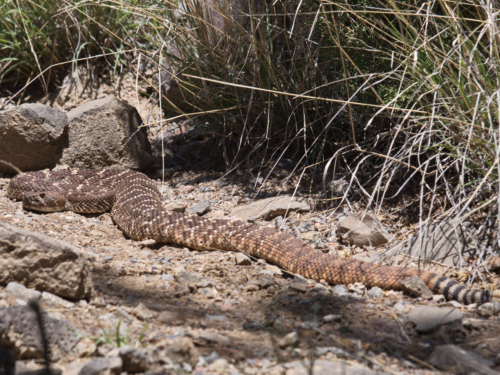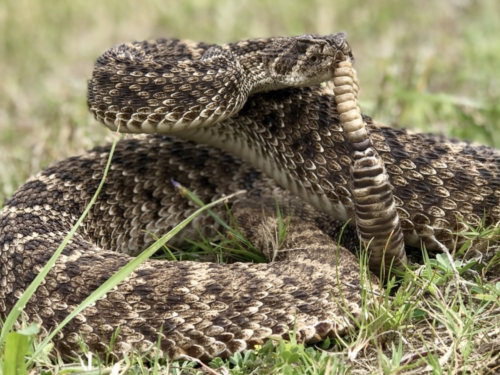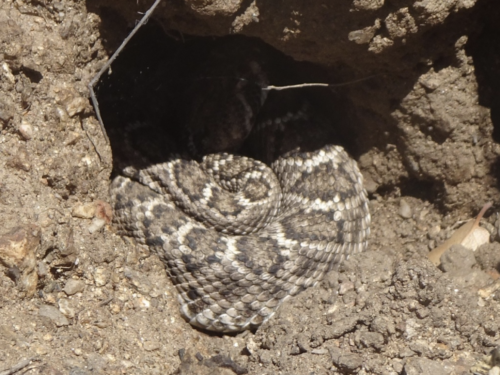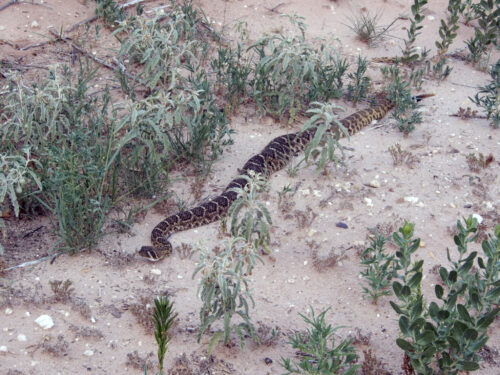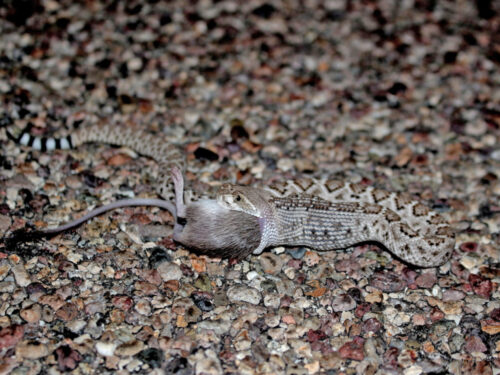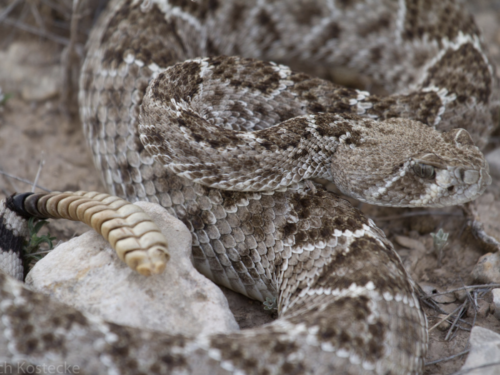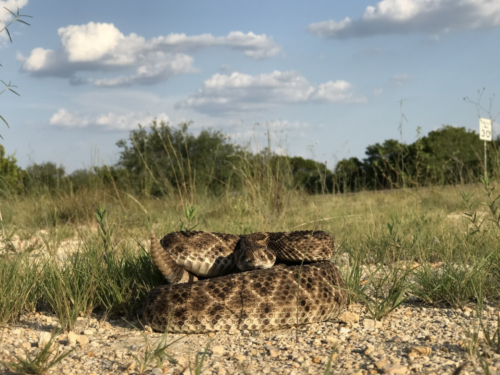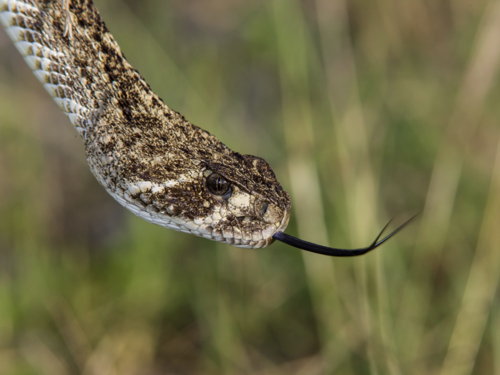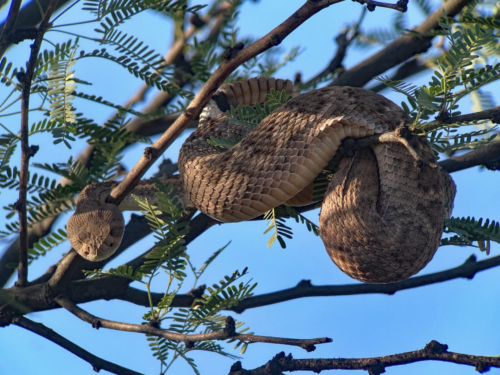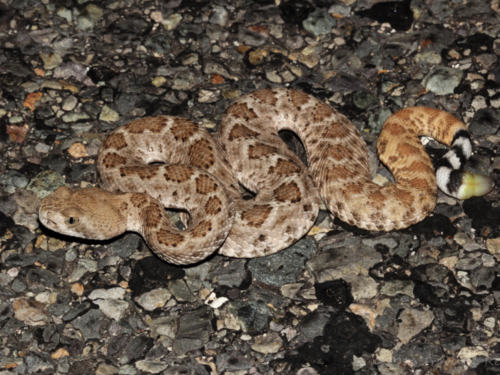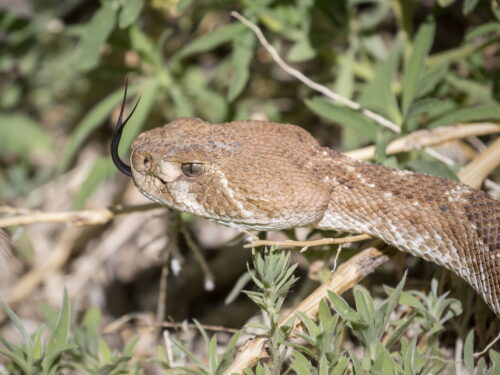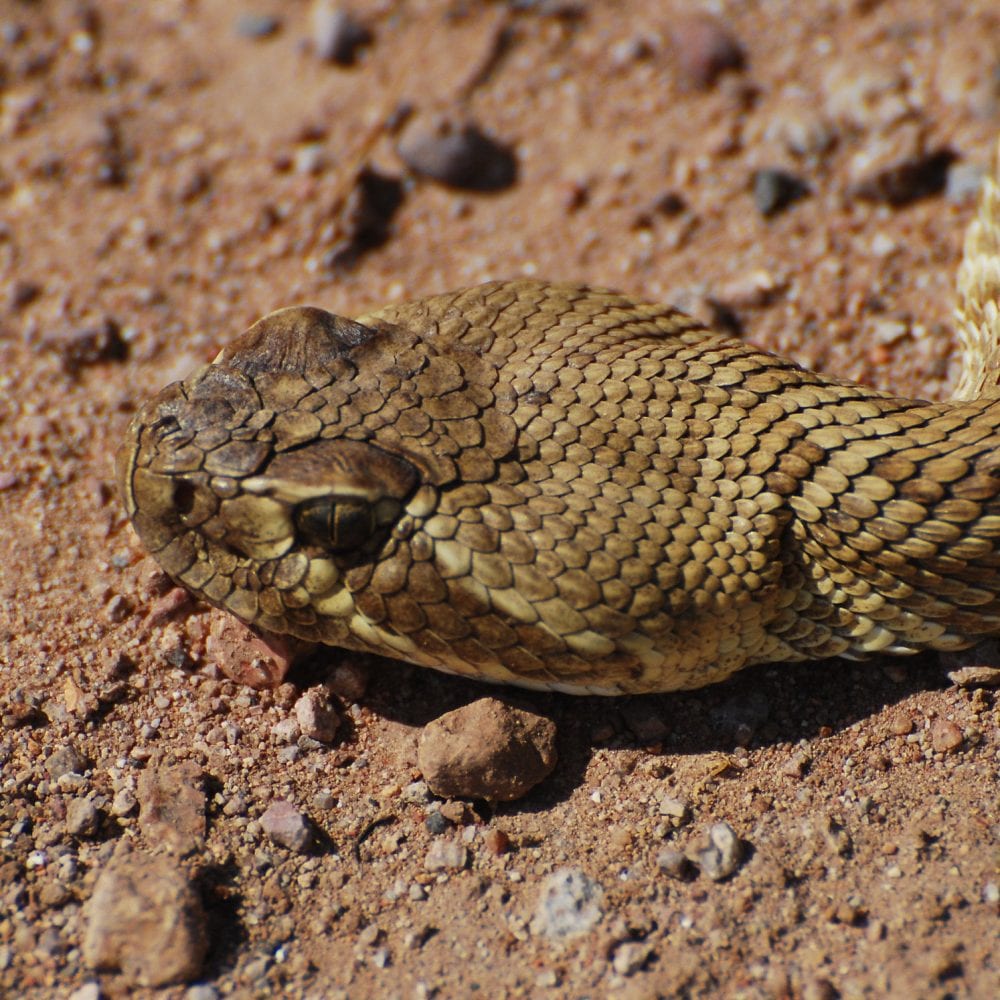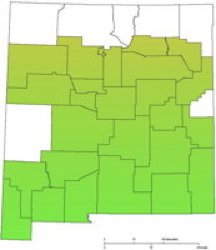Western Diamondback Rattlesnake
Scientific name: Crotalus atrox
Type: Reptitle
Family: Viperdiae (Vipers)
Size: Up to 5 feet in length
Weight: 3 to 6 pounds
Life Span: More than 20 years
Physical Description
Western diamondback rattlesnakes are are a type of poisonous snake known as a “pit viper”. They literally have special heat-sensing pit organs located between the eye and the nostril on the side of their spade-shaped heads. In addition, they have long, tubular fangs. There is a structure at the end of the tail known as the “rattle”. When the rattlesnake shakes its tail, the outer shell of the rattle clicks together making a distinctive warning sound.
The color of western diamondback rattlesnakes varies from gray to brown to olive to reddish brown and helps in camouflaging the snake. The pattern of dark, diamond-shaped spots on the snake’s back gives it its common name. There are also stripes (1 dark and 2 light) on the side of the head and a series of black and white rings on the tail just before the rattle.
Males are much larger than females and have a longer, thinner tail but otherwise the two sexes look the same.
Diamond Pattern

Rattle
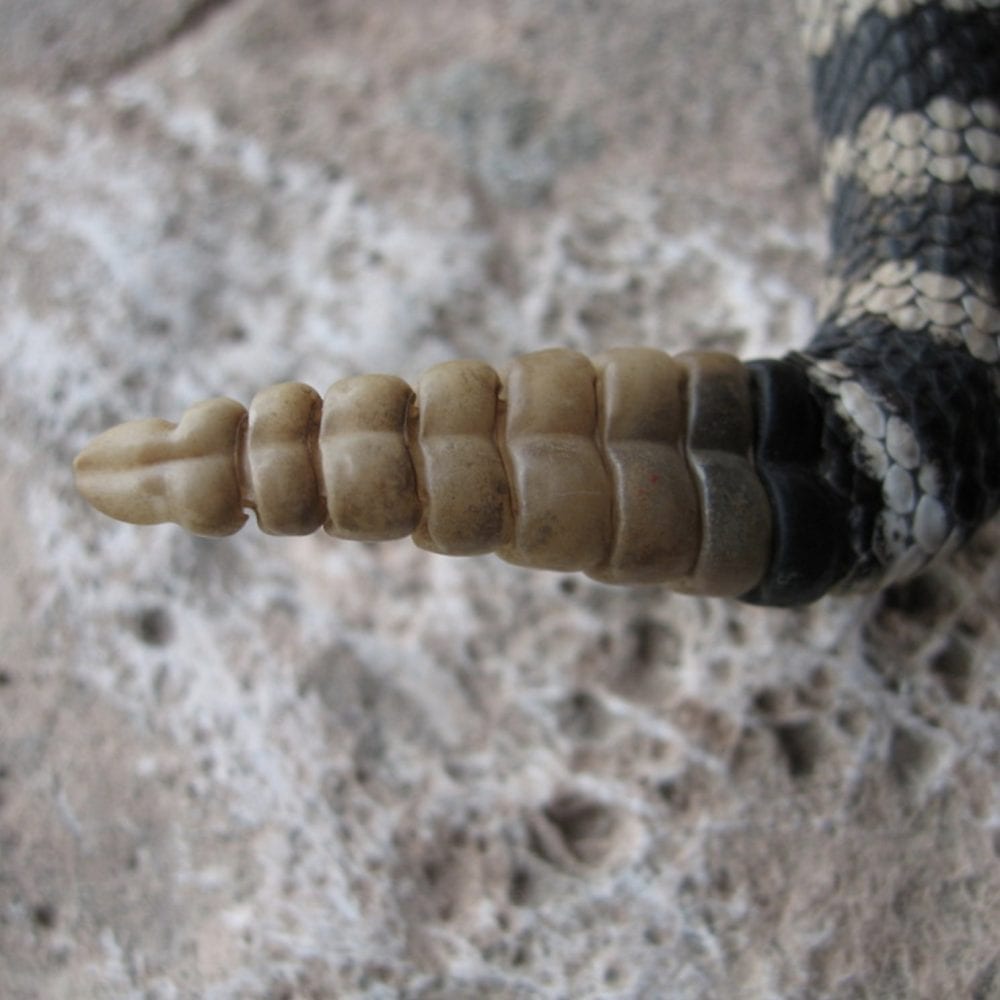
Range and Habitat
The western diamondback rattlesnake can be found from central Texas, through southern New Mexico and Arizona, and into southern California. Its range also extends into central Mexico.
These snakes live in a diverse set of habitats from desert flats to rocky hillsides, grasslands to forested areas, and rocky canyons to rugged slopes up to 7,000 feet above sea level.
Diet
Western diamondback rattlesnakes hunt a large number of different small mammals (prairie dogs, rabbits, gophers, chipmunks, ground squirrels, mice, and rats). They will also eat birds and lizards. These snakes can go several weeks between feedings.
Behavior and Social Life
Western diamondback rattlesnakes are aggressive and easily excited. However, they usually only act defensively. If threatened, a rattler will slightly flatten its body, rolling it into a spiral. It will then lift the upper part of its body up off the ground into an S-shape while raising and rattling its tail.
Western diamondback rattlesnakes primarily hunt at night. They use their heat-sensing pit organs to be able to “see” their prey in the dark. They will often attack small mammals as they venture nearby or by entering their burrows. They are capable of ambushing and swallowing animals that weigh more than they do.
Come fall, rattlesnakes migrate to what is called a winter hibernacula. Typically these areas are small caves, abandoned burrows, or rock crevices. Multiple individuals will hibernated together during the winter in a single den area. During spring, the snakes will hang out around these dens for awhile before dispersing.
Rattlesnakes have a distinctive type of movement known as “concertina”, like the instrument which is played by moving in and out. The snake pulls up its the body into bends and then straightens out. This method of locomotion is most efficient in narrow tunnels or when climbing.
Life Cycle
Western diamondback rattlesnakes mate in the spring soon after coming out of hibernation. The male flicks his tongue while mating and curling himself around the female. This process can last for hours.
About 5 months later, the female gives birth to around 10 to 20 young. The young snakes pierce the thin egg membrane that surrounds them just before birthing process starts. This results in their live birth. The mother abandons the young a few hours after they are born. The young are born with fangs and venom and are capable of capturing their own food.
Concertina Movement
Shed Skin
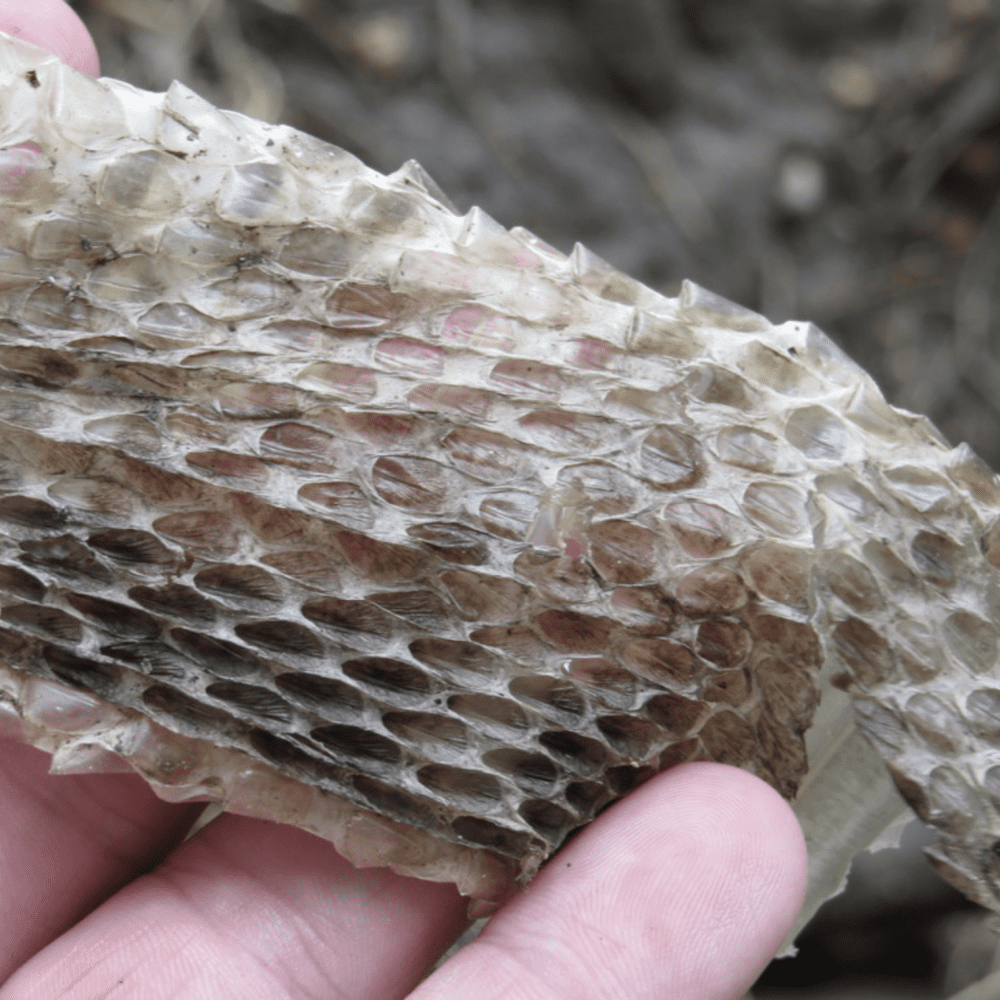
Skeleton
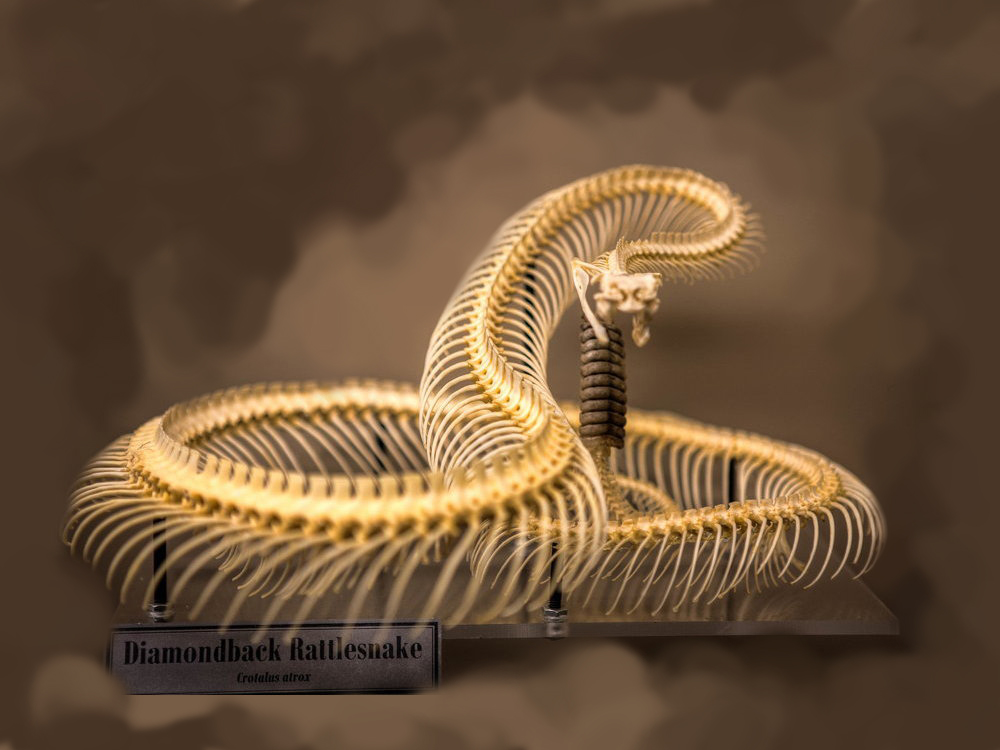
Ecological Role
A rattlesnake’s role in controlling small mammal populations is key to a balanced ecosystem. In turn, they, especially as juveniles, sometimes serve as a meal for a large bird such as an eagle or roadrunner or even a coyote or fox.
Interactions With Humans
Western Diamondback Rattlesnake are feared by humans for their venomous bite. So they are often viewed as dangerous pests rather than the important predators of small rodents that they are. They, and other similar-looking snakes like gopher snakes, are often killed needlessly. In addition, rattlesnakes are still sold on the live-snake market and their skin used in the making of shoes and belts.
Interesting Facts
- Western diamondback rattlesnakes are also known as “adobe snakes” and the “desert diamondback snakes”.
- Western diamondback rattlesnakes are the most common rattlesnake encountered in Bandelier National Monument.
- The distinctive black and white bands just above their rattle distinguishes western diamondback rattlesnakes from most other rattlesnakes.
- Counting rattles does not tell you the age of a snake as a new rattle is added with each molt (2 – 3 times/year) and older ones are shed.
- Western diamondback rattlesnakes will swim through water.
- These snakes can climb a tree for a short distance when necessary to pursue prey.
- A rattlesnake can move its rattle back and forth at more than 60 times per second.
- A rattle is made up of keratin just like fingernails.
- A group of rattlesnakes is called a rhumba.
- Western diamondback rattlesnakes may overwinter with other species of snakes.
- Rattlesnake venom is mainly hemotoxic attacking the victim’s blood system.
- Rattlesnake venom can retain its potency for many years.
- Crotalus atrox causes more fatalities than any other snake in the United States.

